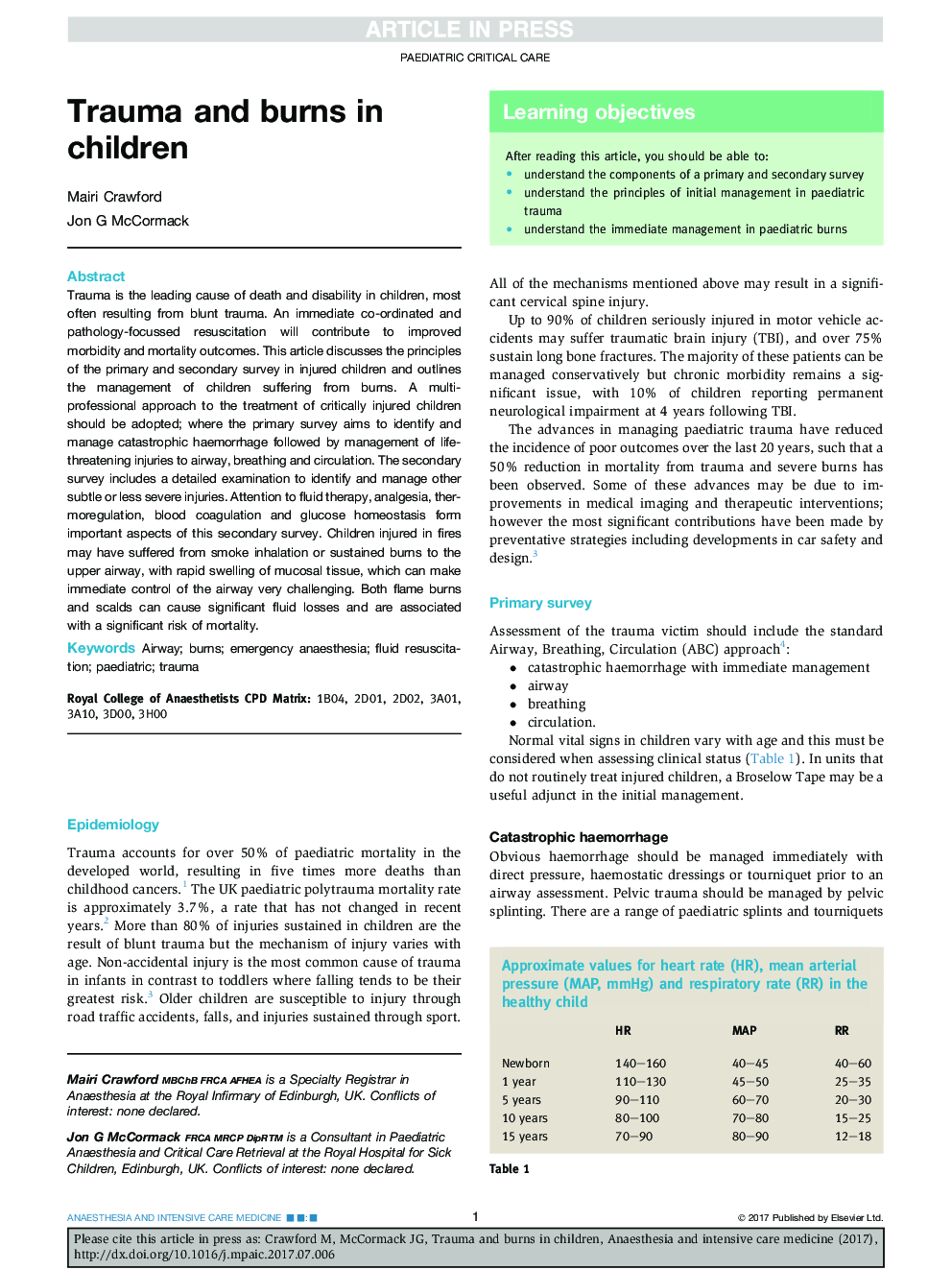| Article ID | Journal | Published Year | Pages | File Type |
|---|---|---|---|---|
| 8610264 | Anaesthesia & Intensive Care Medicine | 2017 | 7 Pages |
Abstract
Trauma is the leading cause of death and disability in children, most often resulting from blunt trauma. An immediate co-ordinated and pathology-focussed resuscitation will contribute to improved morbidity and mortality outcomes. This article discusses the principles of the primary and secondary survey in injured children and outlines the management of children suffering from burns. A multi-professional approach to the treatment of critically injured children should be adopted; where the primary survey aims to identify and manage catastrophic haemorrhage followed by management of life-threatening injuries to airway, breathing and circulation. The secondary survey includes a detailed examination to identify and manage other subtle or less severe injuries. Attention to fluid therapy, analgesia, thermoregulation, blood coagulation and glucose homeostasis form important aspects of this secondary survey. Children injured in fires may have suffered from smoke inhalation or sustained burns to the upper airway, with rapid swelling of mucosal tissue, which can make immediate control of the airway very challenging. Both flame burns and scalds can cause significant fluid losses and are associated with a significant risk of mortality.
Related Topics
Health Sciences
Medicine and Dentistry
Anesthesiology and Pain Medicine
Authors
Mairi Crawford, Jon G. McCormack,
